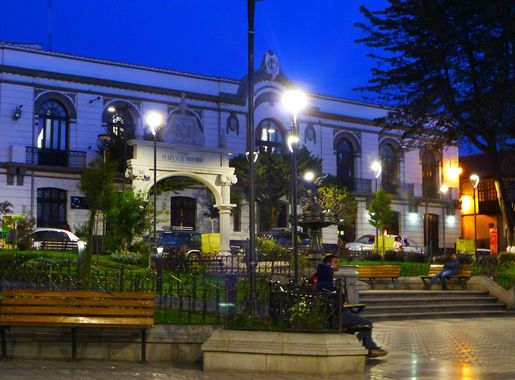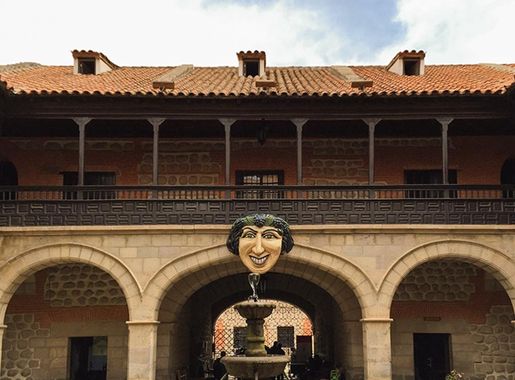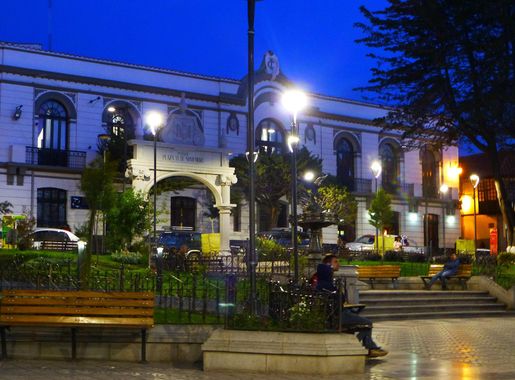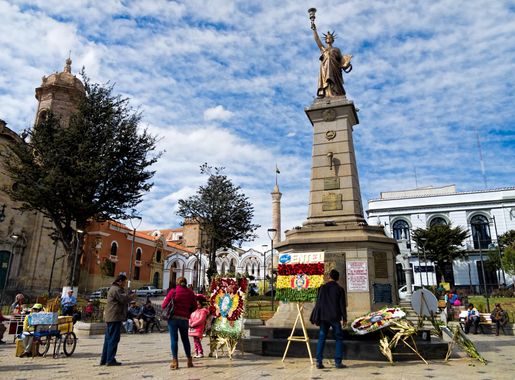
Plaza 10 de Noviembre: The Heartbeat of Historic Potosí
Discover Plaza 10 de Noviembre in Potosí: A captivating blend of history, culture, and vibrant local life in the heart of Bolivia's Andean highlands.
Plaza 10 de Noviembre stands as the vibrant epicenter of Potosí, a city steeped in rich history and adorned with colonial architecture. Nestled high in the Andean mountains, this plaza is not just a physical space but a journey through time, encapsulating the spirit of an era when Potosí was one of the wealthiest cities in the world, thanks to its prolific silver mines. Visitors to Plaza 10 de Noviembre will find themselves surrounded by stunning edifices that narrate the city's storied past. The majestic Cathedral of Potosí, with its baroque façade, invites you to explore its sacred interiors. Right across, the ornate Casa de la Moneda (Royal Mint) offers a deep dive into the history of coinage and the city's economic significance during the Spanish colonial period. The plaza itself is a bustling hub where locals and tourists alike converge. Street vendors selling traditional Bolivian snacks, artisans displaying their handcrafted wares, and musicians enlivening the atmosphere with Andean melodies create a sensory feast. As you stroll through the plaza, the sight of children chasing pigeons and elderly men engaged in animated discussions adds to the locale's charm. A visit during the evening reveals a different facet of Plaza 10 de Noviembre. The soft glow of street lamps casts a magical ambiance, perfect for a leisurely walk or a quiet moment of reflection. Surrounding cafes and restaurants offer a chance to savor local cuisine, making it a perfect end to your day in this historic neighborhood.
Local tips in Plaza 10 de Noviembre
- Visit early in the morning to avoid crowds and enjoy a peaceful experience.
- Carry some small change for purchasing local snacks and souvenirs from street vendors.
- Wear comfortable shoes as the streets around the plaza are cobblestone and can be uneven.
- Don't miss the guided tours at Casa de la Moneda for a deep dive into Potosí's rich history.
- Evenings are perfect for experiencing the plaza's serene ambiance under the street lamps.
Plaza 10 de Noviembre: The Heartbeat of Historic Potosí
Plaza 10 de Noviembre stands as the vibrant epicenter of Potosí, a city steeped in rich history and adorned with colonial architecture. Nestled high in the Andean mountains, this plaza is not just a physical space but a journey through time, encapsulating the spirit of an era when Potosí was one of the wealthiest cities in the world, thanks to its prolific silver mines. Visitors to Plaza 10 de Noviembre will find themselves surrounded by stunning edifices that narrate the city's storied past. The majestic Cathedral of Potosí, with its baroque façade, invites you to explore its sacred interiors. Right across, the ornate Casa de la Moneda (Royal Mint) offers a deep dive into the history of coinage and the city's economic significance during the Spanish colonial period. The plaza itself is a bustling hub where locals and tourists alike converge. Street vendors selling traditional Bolivian snacks, artisans displaying their handcrafted wares, and musicians enlivening the atmosphere with Andean melodies create a sensory feast. As you stroll through the plaza, the sight of children chasing pigeons and elderly men engaged in animated discussions adds to the locale's charm. A visit during the evening reveals a different facet of Plaza 10 de Noviembre. The soft glow of street lamps casts a magical ambiance, perfect for a leisurely walk or a quiet moment of reflection. Surrounding cafes and restaurants offer a chance to savor local cuisine, making it a perfect end to your day in this historic neighborhood.
Iconic landmarks you can’t miss
Plaza Central
Experience the vibrant culture and rich history of Potosí at Plaza Central, where stunning architecture meets local life in a picturesque setting.

Parque Infantil 10 de Noviembre
Discover the joy of family fun at Parque Infantil 10 de Noviembre, a lively playground in Villa Imperial de Potosí, where laughter and adventure await.
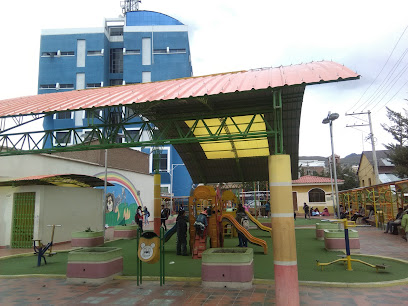
Residencial 10 de noviembre
Discover the comfort of Residencial 10 de Noviembre in Potosí, where cultural heritage meets modern hospitality in Bolivia's historic gem.
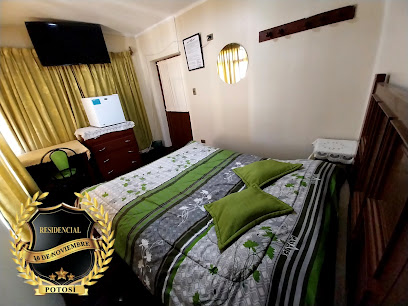
Micro Galería 10 de Noviembre
Explore the vibrant Micro Galería 10 de Noviembre in Potosí, a shopping haven for unique Bolivian crafts and delicious local flavors.
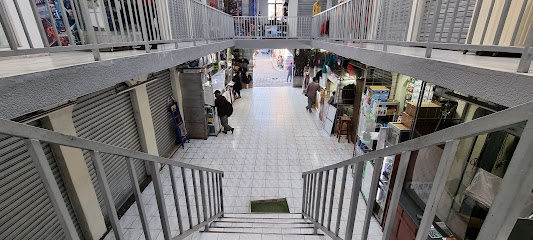
Plaza 10 DE Noviembre (POTOSI)
Discover the vibrant heart of Sucre at Plaza 10 de Noviembre, a cultural hub surrounded by stunning colonial architecture and local flavors.

Plaza España
Discover the vibrant heart of Potosí at Plaza España, a cultural hub featuring colonial architecture, local artisans, and lively markets.

Plaza 10 de Noviembre
Explore the vibrant Plaza 10 de Noviembre in Potosí, a historical town square rich in culture and colonial architecture, perfect for a leisurely stroll.
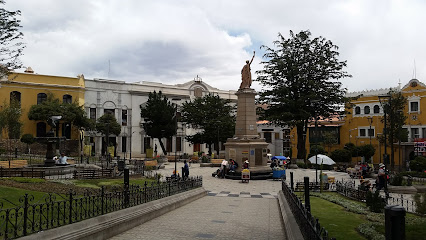
Plaza El Minero
Discover the rich history and vibrant culture of Potosí at Plaza El Minero, the city's iconic town square surrounded by stunning colonial architecture.

Unmissable attractions to see
Plaza 10 de Noviembre
Explore the lush landscapes and rich history of Plaza 10 de Noviembre in Villa Imperial de Potosí, Bolivia's vibrant cultural hub.
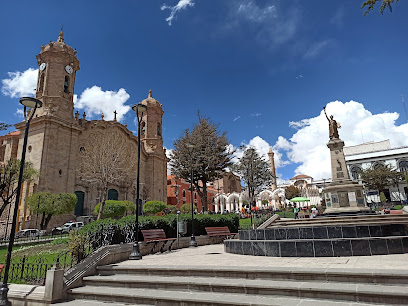
Torre de la Compañía de Jesús
Explore the historical elegance of Torre de la Compañía de Jesús in Potosí, a stunning monument showcasing Bolivia's rich colonial heritage.
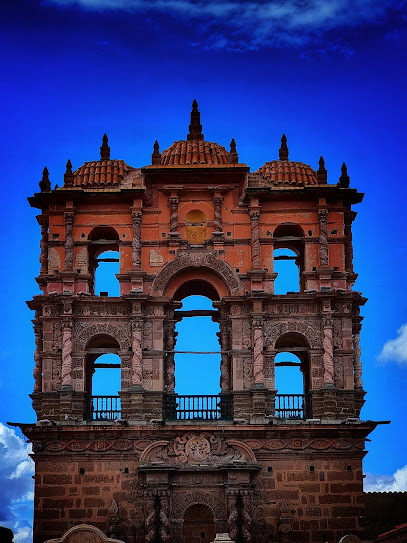
Official Royal Pavilion
Discover the rich history and architectural beauty of the Official Royal Pavilion, a must-see tourist attraction in Potosí, Bolivia.

Catedral Basílica de Nuestra Señora de la Paz, Potosí
Explore the stunning Catedral Basílica de Nuestra Señora de la Paz, an architectural marvel steeped in history located in the heart of Potosí, Bolivia.
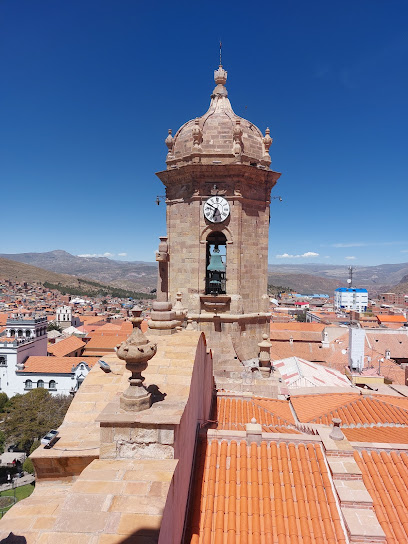
First Mint (Hammer)
Explore the First Mint Museum in Potosí for a deep dive into Bolivia's minting history and its impact on colonial trade.
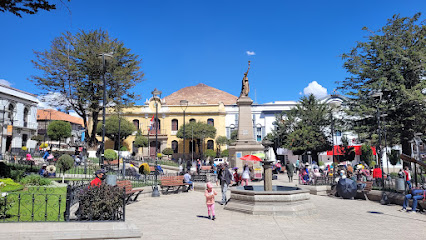
Balcón de la Horca
Experience the breathtaking views and cultural heritage of Balcón de la Horca in Potosí, Bolivia, a must-visit for history buffs and nature lovers alike.

Monumento a los mineros
Explore the Monumento a los Mineros in Potosí, a powerful tribute to the mining heritage and resilience of Bolivia's history.
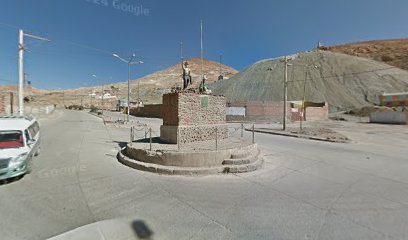
Estatua de Simón Bolívar
Discover the grandeur of the Statue of Simón Bolívar in Potosí, a tribute to the liberator's legacy and a symbol of Bolivia's rich history.
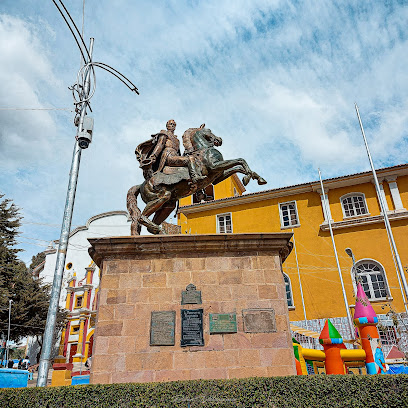
Estatua de la Libertad
Explore the Statue of Liberty in Potosí, a monumental sculpture symbolizing freedom, offering stunning views and rich cultural experiences.
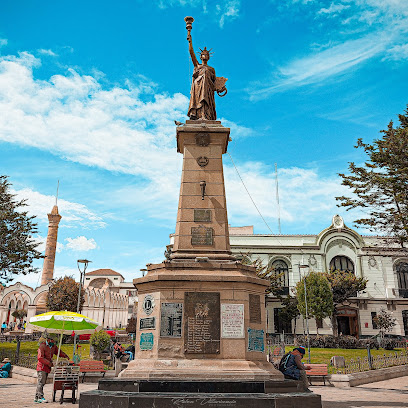
Museo Santo Domingo Potosi
Explore the captivating history and culture of Potosí at Museo Santo Domingo, a must-visit destination for every traveler.
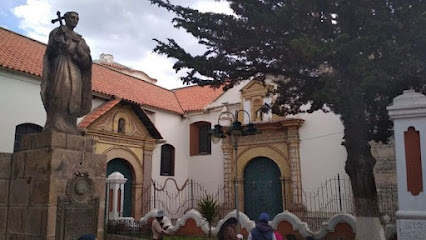
ʜᴏɢᴀʀ
Experience the serene beauty of Villa Imperial de Potosí Park, a hidden gem in the heart of Potosí, Bolivia, perfect for relaxation and outdoor activities.
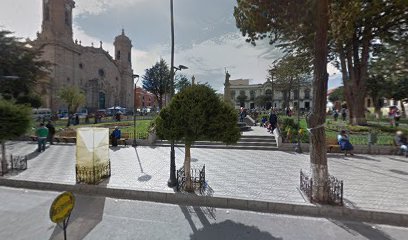
Plaza 10 DE Noviembre (POTOSI)
Discover the vibrant heart of Sucre at Plaza 10 de Noviembre, a historic town square filled with culture, beauty, and local charm.

Essential places to dine
El Fogon
Experience the rich flavors of Bolivia at El Fogon in Potosí - where every meal tells a story.
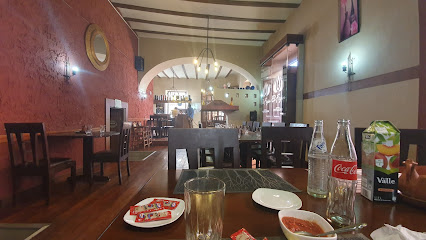
Restaurante Tambo Señorial
Experience authentic Bolivian cuisine in the heart of Potosí at Restaurante Tambo Señorial - where tradition meets flavor.
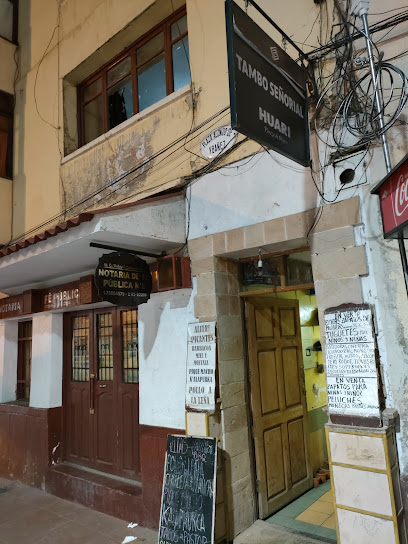
El Tenedor de Plata
Discover the authentic flavors of Bolivia at El Tenedor de Plata in Potosí - where tradition meets taste.
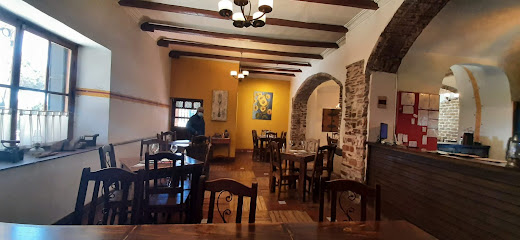
Casona De La Pascualita
Discover authentic Bolivian cuisine at Casona De La Pascualita in Villa Imperial de Potosí - a must-visit for food lovers.
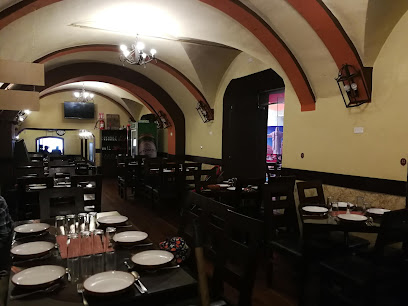
RESTAURANTE LA TRUFA NEGRA
Discover authentic Bolivian flavors at RESTAURANTE LA TRUFA NEGRA in Sucre – a must-visit culinary destination for every traveler.
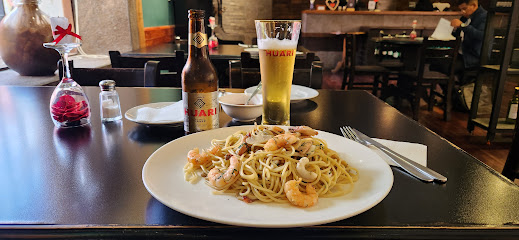
Koala Cafe
Discover the inviting atmosphere and delicious cuisine at Koala Cafe in Potosí - your perfect stop for relaxation during your travels.
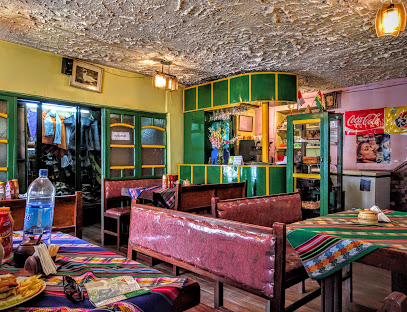
Comida vegetariana Bananas
Discover the best vegetarian dining experience at Comida vegetariana Bananas in Potosí - where fresh ingredients meet vibrant flavors.
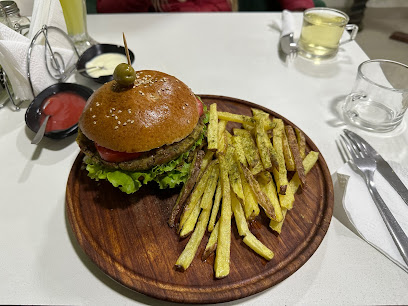
Sabor Cochabambino
Experience authentic Bolivian cuisine at Sabor Cochabambino in Potosí—where tradition meets flavor in every dish.
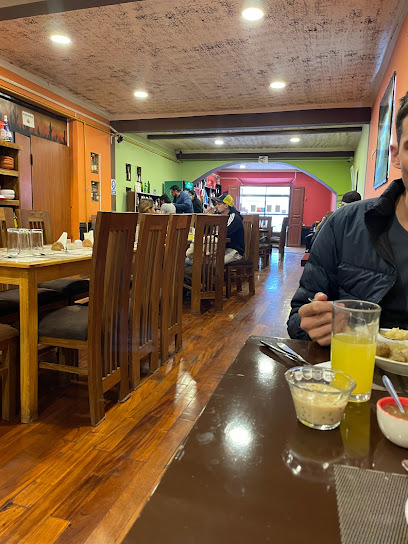
VIC&VAS
Experience the vibrant flavors of Bolivia at VIC&VAS, where culinary tradition meets modern dining in the heart of Potosí.
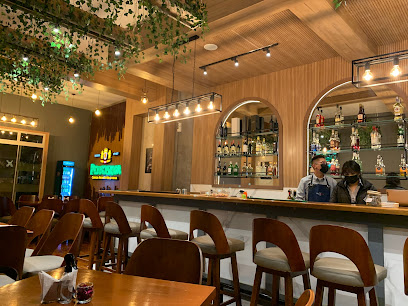
Mamá Pancha Restaurant
Experience the essence of Bolivia at Mamá Pancha Restaurant – where every dish tells a story.
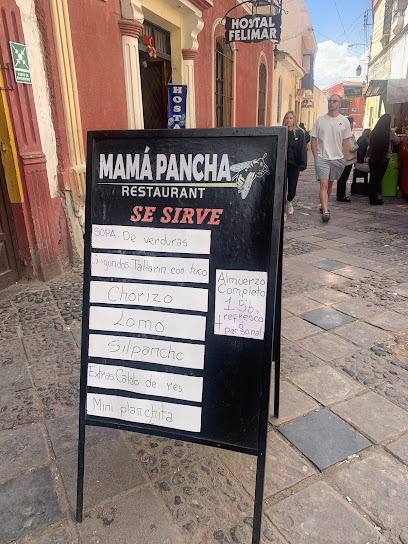
La Cantera
Experience the best of Bolivian cuisine at La Cantera in Villa Imperial de Potosí – where tradition meets modern taste.
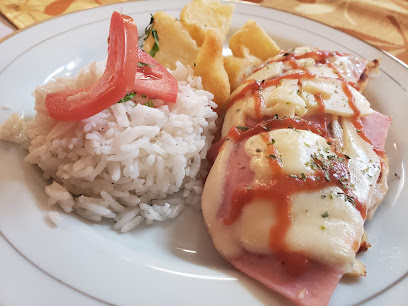
Restaurante 90/60 Good comídas
Experience authentic Bolivian cuisine at Restaurante 90/60 Good - a family-friendly gem in Potosí offering delicious meals for all ages.
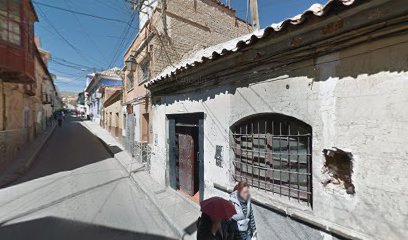
gusto secreto
Discover authentic Bolivian flavors at Gusto Secreto in Potosí – a must-visit dining destination for culinary enthusiasts.
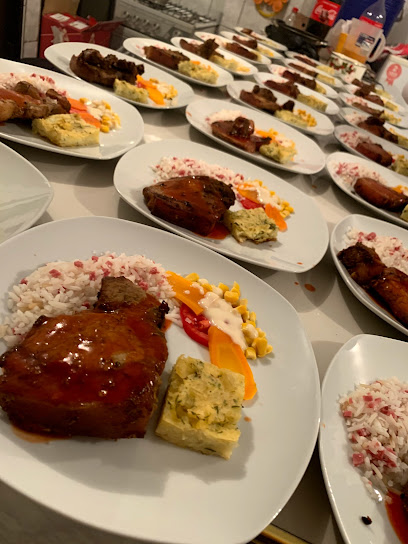
Markets, malls and hidden boutiques
Plaza 10 de Noviembre
Explore the beauty and history of Plaza 10 de Noviembre, a vibrant park in Potosí, Bolivia, where culture and nature come alive.
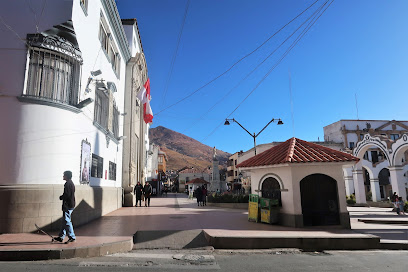
D&D Boutique Centro Comercial San Lorenzo Amb N°13
Discover unique fashion at D&D Boutique in Potosí, where local craftsmanship meets modern style in an inviting shopping experience.
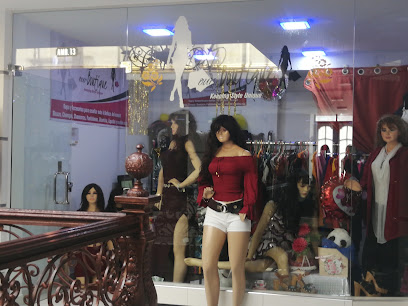
Miniso Potosí
Explore Miniso Potosí for unique gifts and trendy items that make perfect souvenirs from your visit to this historic Bolivian city.
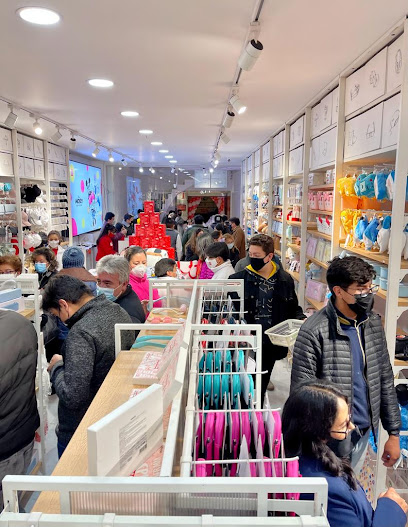
Hashtag - Tienda de Ropa y Accesorios
Explore unique Bolivian fashion at Hashtag - Tienda de Ropa y Accesorios in Potosí, where style meets local culture in a vibrant shopping experience.

Micro Galería 10 de Noviembre
Explore the rich culture and shopping delights at Micro Galería 10 de Noviembre in Potosí, a vibrant hub for unique Bolivian crafts and cuisine.
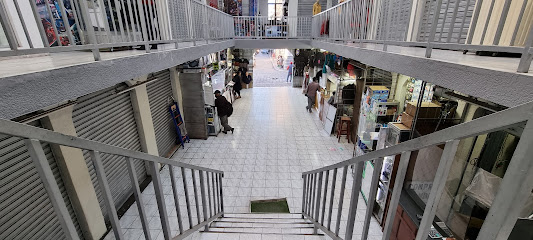
Tienda Obsequio
Explore the vibrant culture of Bolivia with unique gifts and artisanal treasures at Tienda Obsequio in Potosí.
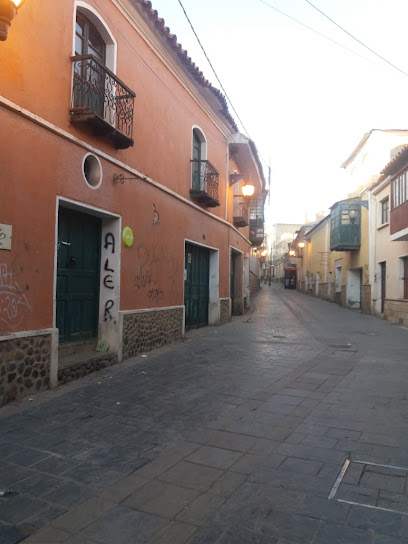
Teshy kids
Explore Teshy Kids in Potosi, where children's fashion meets creativity in a delightful boutique experience.
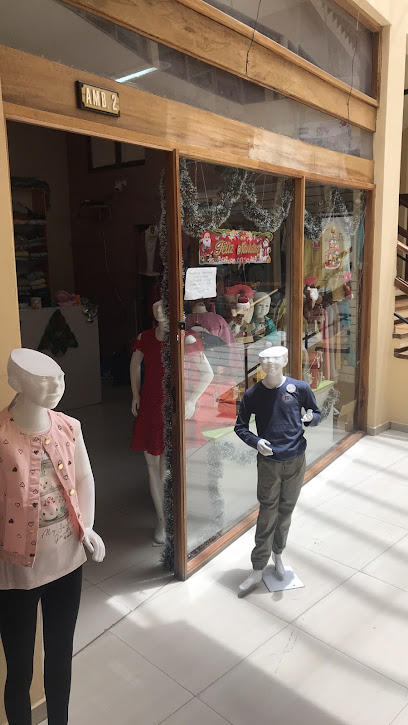
Shop and music
Explore the vibrant clothing store in Potosí, where local fashion meets the rhythm of Bolivian music for an unforgettable shopping experience.
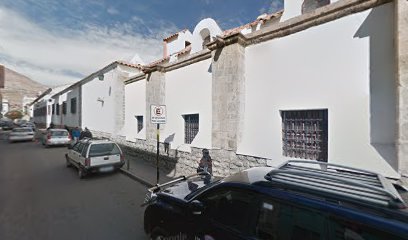
Plaza 10 DE Noviembre (POTOSI)
Discover the vibrant heart of Sucre at Plaza 10 de Noviembre, where history, culture, and community come alive in a picturesque town square.

Infinity Shop
Explore the vibrant youth fashion scene at Infinity Shop in Potosí, where trendy styles meet local craftsmanship in a fun shopping environment.
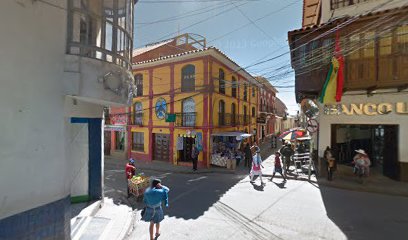
Essential bars & hidden hideouts
Plaza 10 de Noviembre
Explore the vibrant Plaza 10 de Noviembre in Potosí, Bolivia, where history, culture, and local life converge in a stunning park setting.
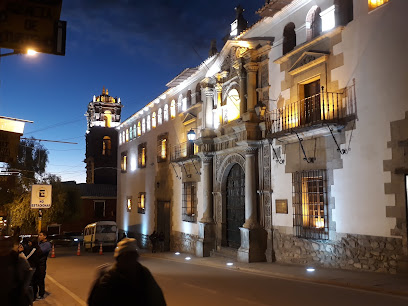
El Boliche Del Alan
Discover the vibrant nightlife of Potosi at El Boliche Del Alan, where friendly vibes and delicious drinks await every visitor.
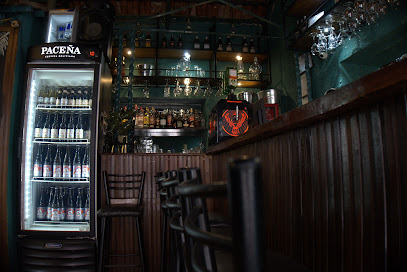
EL SOTANO CAFE PUB
Discover the cozy charm of El Sotano Cafe Pub in Potosí, where American comfort food meets a friendly atmosphere.
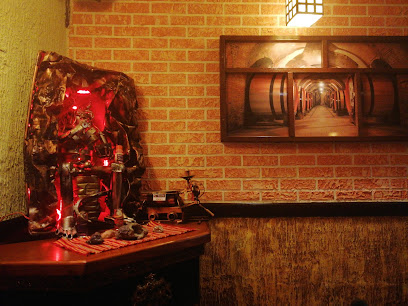
CABA'S PUB
Explore the vibrant flavors of Bolivia at CABA'S PUB in Villa Imperial de Potosí, a delightful gastropub offering a unique dining experience.
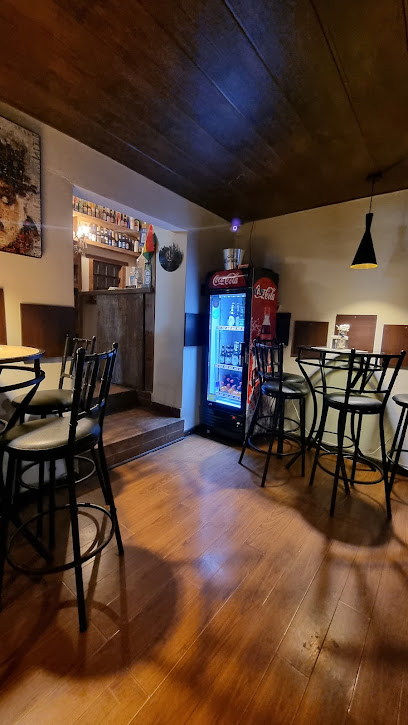
Only Pub Kachy Wasi
Discover the vibrant atmosphere and local charm at Only Pub Kachy Wasi in Potosí, the perfect spot to unwind and enjoy the nightlife.
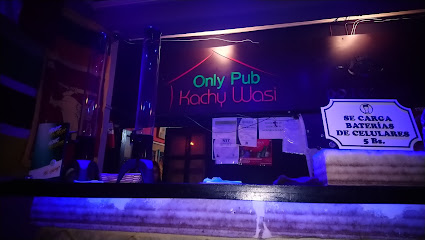
ATIPICA PUB
Discover the vibrant atmosphere of Atipica Pub, a must-visit bar in Villa Imperial de Potosí, where local culture meets lively nightlife.
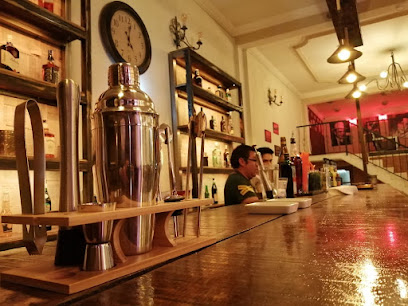
Luna Diabla
Experience the vibrant nightlife at Luna Diabla, a lively pub in Potosí offering delicious drinks and a welcoming atmosphere.
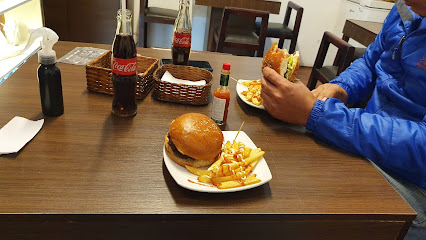
Bar Tapilla Sixtina
Experience the vibrant flavors of Bolivian cuisine at Bar Tapilla Sixtina, a must-visit tapas bar in Villa Imperial de Potosí.

Attos Shisha Pub
Discover the charm of Sucre at Attos Shisha Pub, where traditional flavors meet modern shisha culture in a vibrant setting.

ROUTE 4000
Discover ROUTE 4000, a vibrant bar in Potosí offering a unique blend of local and international drinks in a lively atmosphere.
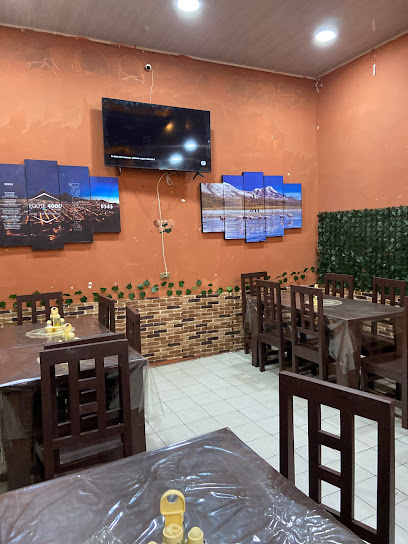
Local Phrases
-
- Hello¡Hola!
[oh-lah] - Goodbye¡Adiós!
[ah-dee-ohs] - YesSí
[see] - NoNo
[no] - Please/You're welcomePor favor/De nada
[por fah-bor/de nah-dah] - Thank youGracias
[grah-see-ahs] - Excuse me/SorryDisculpe/Perdón
[dee-skool-peh/pehr-dohn] - How are you?¿Cómo estás?
[koh-moh ehs-tahs] - Fine. And you?Bien. ¿Y tú?
[byen. ee too] - Do you speak English?¿Hablas inglés?
[ah-blahs een-glehs] - I don't understandNo entiendo
[noh ehn-tyen-doh]
- Hello¡Hola!
-
- I'd like to see the menu, pleaseMe gustaría ver el menú, por favor
[meh goos-tah-ree-ah behr ehl meh-noo, por fah-bor] - I don't eat meatNo como carne
[noh koh-moh kahr-neh] - Cheers!¡Salud!
[sah-lood] - I would like to pay, pleaseMe gustaría pagar, por favor
[meh goos-tah-ree-ah pah-gahr, por fah-bor]
- I'd like to see the menu, pleaseMe gustaría ver el menú, por favor
-
- Help!¡Ayuda!
[ah-yoo-dah] - Go away!¡Vete!
[veh-teh] - Call the Police!¡Llama a la policía!
[yah-mah ah lah poh-lee-see-ah] - Call a doctor!¡Llama a un médico!
[yah-mah ah oon meh-dee-koh] - I'm lostEstoy perdido
[ehs-toy pehr-dee-doh] - I'm illEstoy enfermo
[ehs-toy ehn-fehr-moh]
- Help!¡Ayuda!
-
- I'd like to buy...Me gustaría comprar...
[meh goos-tah-ree-ah kohm-prahr] - I'm just lookingSolo estoy mirando
[soh-loh ehs-toy mee-rahn-doh] - How much is it?¿Cuánto cuesta?
[kwan-toh kwes-tah] - That's too expensiveEs demasiado caro
[ehs deh-mah-syah-doh kah-roh] - Can you lower the price?¿Puede bajar el precio?
[pweh-deh bah-hahr ehl preh-syoh]
- I'd like to buy...Me gustaría comprar...
-
- What time is it?¿Qué hora es?
[keh oh-rah ehs] - It's one o'clockEs la una
[ehs lah oo-nah] - Half past (10)Y media (10)
[ee meh-dee-ah (diez)] - MorningMañana
[mah-nyah-nah] - AfternoonTarde
[tahr-deh] - EveningNoche
[noh-cheh] - YesterdayAyer
[ah-yehr] - TodayHoy
[oy] - TomorrowMañana
[mah-nyah-nah] - 1Uno
[oo-noh] - 2Dos
[dohs] - 3Tres
[trehs] - 4Cuatro
[kwah-troh] - 5Cinco
[seen-koh] - 6Seis
[says] - 7Siete
[syeh-teh] - 8Ocho
[oh-choh] - 9Nueve
[nweh-veh] - 10Diez
[dyehs]
- What time is it?¿Qué hora es?
-
- Where's a/the...?¿Dónde está...?
[dohn-deh ehs-tah] - What's the address?¿Cuál es la dirección?
[kwal ehs lah dee-rehk-syohn] - Can you show me (on the map)?¿Puede mostrarme (en el mapa)?
[pweh-deh mohs-trar-meh (ehn ehl mah-pah)] - When's the next (bus)?¿Cuándo es el próximo (autobús)?
[kwan-doh ehs ehl proh-ksy-moh (ow-toh-boos)] - A ticket (to ....)Un boleto (a ....)
[oon boh-leh-toh (ah)]
- Where's a/the...?¿Dónde está...?
History of Plaza 10 de Noviembre
-
Potosí, founded in 1545, quickly became a focal point of the Spanish colonial empire due to its rich silver deposits. The Plaza 10 de Noviembre is situated in the heart of this historic city, which was once among the wealthiest in the world. The square represents the commercial and social hub where miners, merchants, and locals congregated, establishing a vibrant community.
-
The Plaza 10 de Noviembre witnessed significant events during the 1780 Potosí Rebellion, where indigenous and mestizo populations revolted against oppressive labor conditions in the mines. This uprising was part of a broader movement across Bolivia, reflecting the deep social injustices rooted in the colonial system. The square served as a gathering place for those seeking to challenge the Spanish colonial authorities.
-
Throughout the centuries, Plaza 10 de Noviembre has been a vibrant cultural melting pot, reflecting the diverse influences of indigenous, Spanish, and mestizo cultures. The architectural styles surrounding the plaza illustrate this blend, featuring colonial buildings alongside more contemporary structures that house local businesses, cafes, and artisan shops, making it a lively space that celebrates Potosí's multicultural heritage.
-
Plaza 10 de Noviembre has historically served as a vital stage for civic life in Potosí. It has been the location of political demonstrations, cultural festivals, and religious celebrations, showcasing the community's resilience and spirit. The plaza continues to be a focal point for local events, reinforcing its role as a center of social interaction and civic pride.
-
In the early 21st century, the Plaza 10 de Noviembre became a site of commemoration for revolutionary heroes who fought for independence and justice. Statues and monuments in the square honor figures such as Simón Bolívar, reflecting Potosí's commitment to remembering its historical struggles for freedom and equality. This aspect of the plaza connects the past with the ongoing quest for social justice in Bolivia.
Plaza 10 de Noviembre Essentials
-
Plaza 10 de Noviembre is centrally located in Potosi and can be easily accessed from other neighborhoods. If you're coming from the bus terminal, it's about a 15-minute walk or a short taxi ride. For visitors staying in neighborhoods like Cerro Rico or Villa Imperial, local taxis and shared minibuses (colectivos) are readily available and provide convenient access to the plaza.
-
Plaza 10 de Noviembre is pedestrian-friendly, making walking the best way to explore the area. Local taxis are inexpensive and can be hailed easily. While public transport options like buses are available, they may not always be the most convenient for tourists. Bicycles can be rented from nearby shops, but be cautious of the altitude and steep streets.
-
Plaza 10 de Noviembre is generally safe for tourists, but standard precautions should be observed. Areas around the bus terminal and markets may experience petty crime, such as pickpocketing. Avoid walking alone at night in less populated streets and keep valuables secured. Always be aware of your surroundings, especially in crowded places.
-
In case of an emergency, dial 110 for police assistance or 118 for medical emergencies. Hospitals and clinics are available in Potosi, with several located near the plaza. It is advisable to have travel insurance and know the location of the nearest medical facility. For less severe health issues, local pharmacies can provide over-the-counter medications.
-
Fashion: Do dress modestly, especially when visiting churches. Avoid shorts and revealing clothing. Religion: Do respect local customs and practices. When entering a church, dress appropriately and avoid loud conversations. Public Transport: Do give up your seat to the elderly. Don't eat or drink on public transport. Greetings: Do greet locals with a handshake. Don't use overly casual greetings. Eating & Drinking: Do try local specialties. Don't refuse food or drink, as it may be seen as impolite.
-
To experience Plaza 10 de Noviembre like a local, visit the bustling market stalls where you can find traditional foods and crafts. Try local delicacies such as salteñas and pique a lo macho. Engage with vendors, as they are often eager to share their stories and traditions. Don't miss the nearby historical sites, including the Casa de la Moneda, to learn about Potosi's rich mining history.
Nearby Cities to Plaza 10 de Noviembre
-
Things To Do in Sucre
-
Things To Do in Uyuni
-
Things To Do in Tarija
-
Things To Do in Cochabamba
-
Things To Do in Santa Cruz de la Sierra
-
Things To Do in La Paz
-
Things To Do in San Pedro de Atacama
-
Things To Do in Iquique
-
Things To Do in Arica
-
Things To Do in Tacna
-
Things To Do in Copacabana
-
Things To Do in Salta
-
Things To Do in Puno
-
Things To Do in Antofagasta
-
Things To Do in Arequipa

